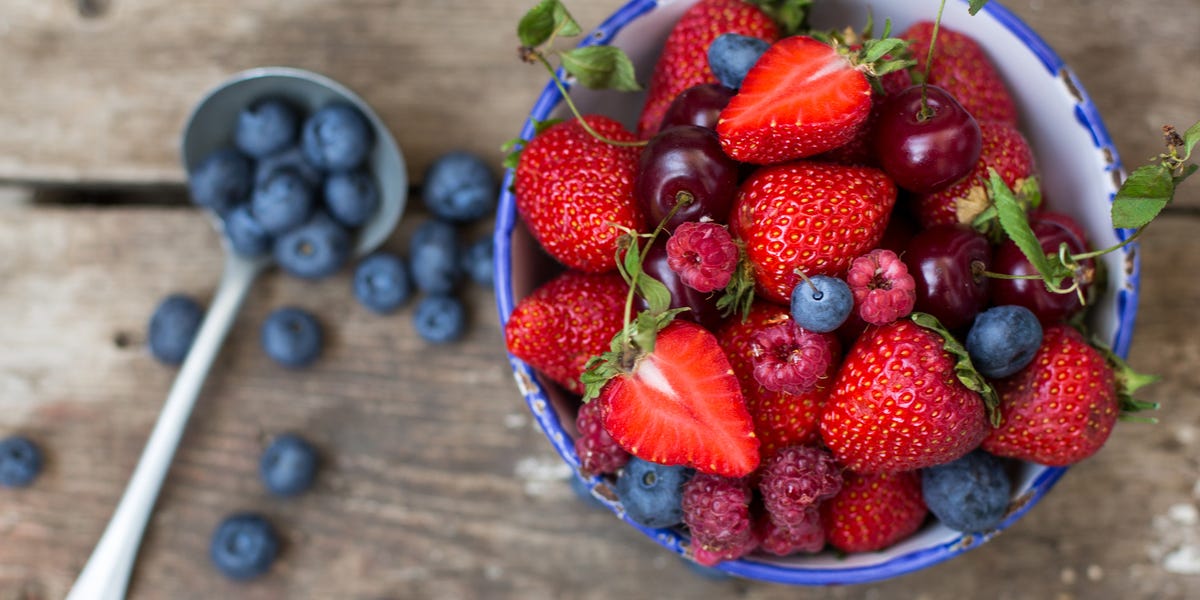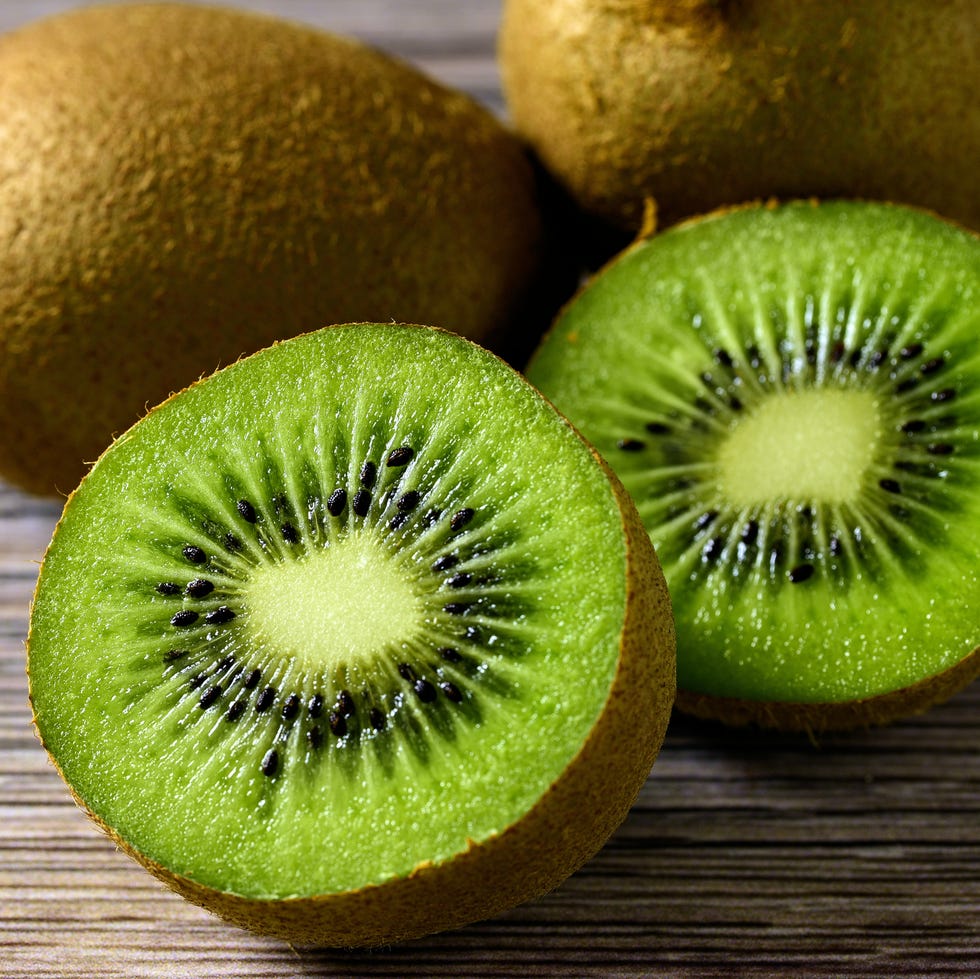You’re well aware that eggs, fish, and low-fat Greek yogurt are great sources of protein. But did you know some fruits actually contain protein, too? “While there are many other foods that are more significant protein sources than fruit, fruits are definitely another way to contribute to your overall protein intake,” says Katherine Zeratsky, RDN, a registered dietitian nutritionist with the Mayo Clinic. “They also contain many vitamins, minerals, fiber, and antioxidants essential for good health.”
Fruits that contain protein are a good way to add variety to your diet, especially if you struggle to meet your daily protein goal. “Many people under-consume protein in their diets,” says Keerthi Kesavarapu, DO, a clinically trained gastroenterologist and an associate professor of medicine at Rutgers Health, Robert Wood Johnson Medical School. “What’s considered ‘high protein’ fruits are those that contain protein between two to four grams per cup.”
And don’t worry about eating too much fruit: “Fruit is a nutrient-dense, low-calorie food that makes you feel full with its high water content and fiber,” Zeratsky says. “For most healthy adults, more or larger portions of fruit aren’t a cause for concern and are rather likely to be of benefit.”
One serving of fruit (about the size of a tennis ball) is about 15 grams of carbohydrates, which is very few in the context of daily food intake for most people, including those with diabetes, Zeratsky adds.
How Much Protein Do You Need Per Day?
It varies based on several factors, including your age, weight, and how active you are. At minimum, your protein goal for the day should be 0.8 grams of protein per kilogram of body weight or 0.36 grams per pound. That translates to about 53 grams of protein per day for a 50-year-old woman who is sedentary. This USDA online calculator can help you figure out your specific protein needs. (And know that many experts think that protein rec is too low for women, especially active ones.)
Here are nine high-protein fruits to add to your diet.
Avocado
Everyone’s favorite spread for toast, an average-sized avocado contains 4.6 grams of protein. “Avocado also contains healthy fats and fibers, which leads to a feeling of satiety, or fullness,” says Zeratsky.
These delicious fruits go well beyond guac or toast. Grill avocados for a smoky, silky side, or stuff ’em with crab for Sunday brunch. You can even create keto-friendly chocolate truffles (and we swear no one will know there’s avocado in them).
Apricot
Fresh apricots contain 2.3 grams of protein per cup. Plus, you’ll get a healthy dose of vitamin C and fiber. Dried apricots also make a handy portable snack you can tuck into your backpack or purse, but a serving size is around ¼ cup, which means you’ll get less protein (about 1.1 grams) per serving. However, they’re still a way to boost your daily protein intake—and dried fruit is much better than noshing on junk food when you get an afternoon sugar craving.
Apricots jazz up everything from couscous to glazed baked ham. Drizzle halved apricots with a wee bit of honey or maple syrup and roast for a super-simple after-dinner treat.
Tomato
Yes, tomatoes are fruits! Raw tomatoes only have about 1.1 grams of protein, but if you’re cooking them up in a soup or sauce, you’ll eat a lot more than one. Tomato puree has 4.1 grams of protein per cup. “Tomatoes are also a good source of vitamins C and K, and cooking also enhances the lycopene, which is a powerful antioxidant that can be protective against inflammation in fighting chronic conditions, such as heart disease,” Zeratsky says.
Make this homemade tomato soup once, and you’ll never go back to that canned stuff. And this tangy tomato chutney will kick up burgers like you won’t believe.
Cherries
Cherries contain 2 grams of protein per cup, Kesavarapu says. Like many types of berries, they’re also high in vitamin C and polyphenols, such as anthocyanins, a type of antioxidant found in many fruits and vegetables. Research has found the anthocyanins in cherries may protect against chronic inflammatory conditions, such as heart disease and arthritis.
You can eat them by the handful or toss them into this fun summery salad. And if you’re baking, you might as well make it cherry cookies!
Passion Fruit
Passion fruit has a pretty amazing 5 grams of protein per cup. Plus, it’s high in vitamin C, Kesavarapu says.
Scoop passion fruit with a spoon and eat fresh, or toss it with yogurt topped with granola. It’s also an unexpected mix-in to any fruit salad.
Guava
With its pretty pinkish color and strawberry-pear flavor, guava contains 4.2 grams of protein per cup. It also contains vitamins A and C and carotenoids, antioxidants that have anti-inflammatory effects.
Guava is best fresh, so look for ripe fruits that are greenish-yellow with a pink tinge and a musky-sweet scent.
Blackberries & Raspberries
These delicious berries may be tiny, but they’re mighty! Berries contain roughly 1.5 grams of protein per cup. Like cherries, they are also full of anthocyanins. One study found that anthocyanins in berries may protect against age-related neurodegenerative diseases by reducing inflammation and improving the brain’s neuroplasticity.
Berries go with everything! Enjoy them fresh over cereal, tossed into smoothies, or added to baby greens with a sprinkle of nuts for a spring-fresh or summery salad.
Kiwi
Kiwi fruits have about 2 grams of protein per cup, which ends up being about two average-sized kiwis. Just one kiwi also contains more than 80 percent of your vitamin C needs for the day, which at least one study found may help boost mood.
Eat kiwis fresh, or make these adorable kiwi strawberry tarts for a light dessert.
Prunes
Prunes often don’t get the respect they deserve, but one cup of stewed prunes contains 3.8 grams of protein. They’re also packed with fiber and vitamin K, which is a nutrient that’s vital to bone health. Dried prunes are also easy to transport for a quick snack, though they have less protein (5 prunes contain about 1 gram of protein).
Add stewed prunes to Greek yogurt for even more protein, or eat a few as an afternoon snack.
Arricca Elin SanSone is a writer, editor, and content creator who specializes in lifestyle and gardening. With a background in health reporting, she applies these same research skills when writing about the science of growing things. She trials new plants in her expansive garden, and her houseplant collection consists of 60+ varieties. Arricca has written thousands of articles for publications such as Country Living, House Beautiful, Good Housekeeping, Prevention, VERANDA, Southern Living, and more. She’s happiest when digging in the dirt, baking, or spending time with the people and dogs she loves.
Read the full article here





